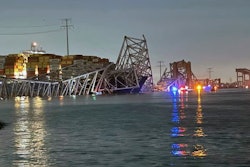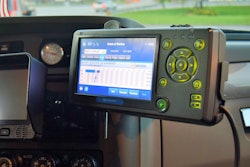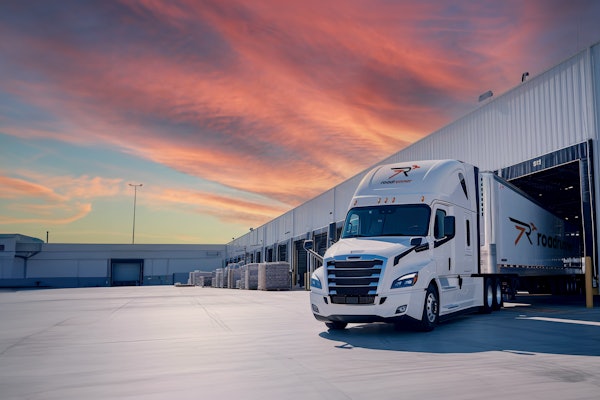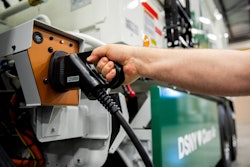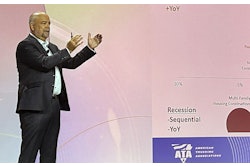As much of the world discovered during the COVID-19 pandemic, commercial freight carriers are the lifeblood of the global economy. If freight doesn't move efficiently, you end up with product shortages and soaring prices. Commercial freight carriers face an enormous amount of pressure to keep goods moving, no matter what it takes.
Doing so creates a major challenge for fleets, who must balance safety with efficiency and speed in everything they do. It's a balance many struggle to maintain. Large trucks and buses experienced 180,949 accidents on U.S. roads in 2022. As high as that number sounds, it's a figure that's about average for the last few years.
Fortunately, there's now an array of new technology that's driving digital transformation in the commercial carrier industry, enabling fleets to improve safety without sacrificing speed and efficiency. Here's an overview of the principal technologies involved in the shift and how they're impacting carriers' safety practices.
IoT and realtime vehicle telemetry
One of the most important technologies making its way into the commercial carrier industry is the Internet of Things (IoT). This refers to various internet-connected sensors and devices that enable a wide array of real-time functionalities. In the trucking industry, carriers are using IoT devices to give them almost total situational awareness of every route they serve. An estimated 42% of all North American fleets had adopted IoT technology by the end of 2021.
Among other things, IoT now gives carriers real-time location data on all their freight assets. In some cases, it also provides environmental data to help carriers safeguard fragile or sensitive goods on their trucks. However, from a safety standpoint, IoT is having an even more important impact.
IoT technology in today's fleet vehicles allows freight firms to monitor operator safety at all times. The devices let managers know if drivers engage in unsafe behaviors like harsh braking, speeding, and other types of aggressive driving. This allows managers to correct such behaviors before they lead to accidents. It also allows them to create incentive systems that reinforce safe behaviors among operators.
All this helps the carriers to keep their insurance costs as low as possible and to protect the funds they allocate to secure necessary freight surety bonds. Since those are some of the biggest cost drivers involved in the commercial freight and freight forwarding industry, that's no small thing. In that way, IoT is helping carriers cut costs by minimizing some of the biggest risks involved in their operations.
Reducing unsafe equipment with predictive maintenance
Another critical bit of technology that's revolutionizing the commercial carrier industry is Artificial Intelligence (AI), specifically applied to predictive maintenance. Keeping freight vehicles on the road for as much of the time as possible plays a key role in supply chain efficiency. Also, maximizing the utility of every vehicle is a bottom-line imperative for every freight company. AI-powered predictive maintenance, when combined with data streams from the aforementioned IoT devices, helps freight firms do that.
Predictive maintenance enables freight companies to move away from milestone-based maintenance schedules. Such schedules require trucks to come off the road at specific intervals, whether they need to or not. With predictive maintenance, sensor arrays monitor for signs of mechanical trouble, allowing for individualized maintenance plans. For example, one truck may need an oil change sooner than another, depending on the loads it carries and the routes it travels. Or a truck that operates in stop-and-go traffic may require new brake pads faster than a vehicle on a long-haul route. Predictive maintenance keeps trucks on the road for a greater percentage of the time. Plus, it can spot signs of impending breakdowns in time to prevent them.
From a safety perspective, that's also a big deal. An estimated 10% of all truck-involved road accidents in the United States stem from equipment failure. By catching signs of trouble before it can create road hazards, predictive maintenance improves overall fleet safety.
Fleet management systems tying technology together
The final piece of the digital transformation puzzle in the commercial carrier industry is the wide adoption of fleet management systems. They're a type of software or platform that can stitch together data from all aspects of fleet operations to provide a single, coherent picture of what's going on. They're the critical interface that helps fleet managers and business owners make sense of the data coming from IoT devices and AI tools.
It also helps managers create and enforce sensible schedules that prevent operator burnout. That's important for two reasons. The first is that freight carriers have specific regulatory responsibilities concerning driver work hours. They must make certain that drivers have appropriate breaks and rest periods built into their schedules.
Plus, driver fatigue plays a part in an estimated 30% to 40% of all truck accidents each year. So, keeping drivers well-rested and ready to drive safely protects the bottom line, too. That makes the adoption of fleet management systems a boon to carrier safety that's helping to address one of the biggest causes of on-the-road accidents.
Safer fleets through technology
The three technologies detailed above are remaking the commercial carrier industry. They're helping it to continually boost efficiency and drive down costs, all while improving safety in multiple ways. It's the kind of change that's necessary for businesses within the industry to remain competitive in a demanding field. And given the global economy's heavy reliance on commercial carriers' ability to keep goods moving all around the world without pause, those are all outcomes that benefit everyone, both inside the industry and elsewhere.




